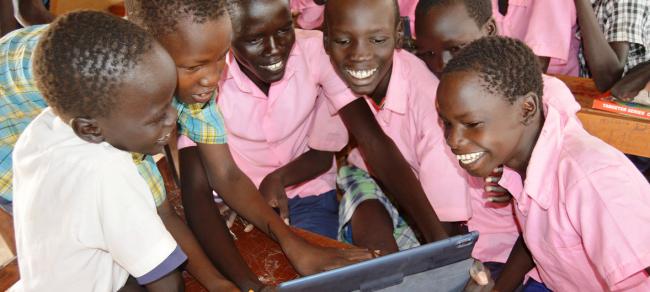
New York, Aug 30 (IBNS): With more and more children forced to leave their homes, over half of the world’s school-aged refugees are now out of education, the United Nations refugee agency said in a new report released on Wednesday.
The agency’s annual report on refugee children’s education, this year called Turn the Tide: Refugee Education in Crisis, warned that without investment, hundreds of thousands more children could miss out on the chance to health themselves and help their communities.
According to the Office of the UN High Commissioner for Refugees (UNHCR) out of a global population of 7.2 million school-age refugee children, four million do not attend lessons of any kind.
The report shows that, despite the efforts of governments, UNHCR and its partners, enrolment of refugee children in school is failing to keep pace with the growing refugee population.
By the end of 2017, there were more than 25.4 million refugees around the world, 19.9 million of them under UNHCR’s mandate. More than half – 52 per cent – were children. Among them, 7.4 million were of school age.
“Education is a way to help children heal, but it is also key to rebuilding their countries,” said Filippo Grandi, UN High Commissioner for Refugees. “Without education, the future of these children and their communities will be irrevocably damaged.”
At a press conference in Geneva, Ita Sheehy, Senior Education Advisor for UNHCR, said that an “unprecedented” increase in refugees this past year has meant that despite committed efforts by governments, humanitarian organizations and donors to change the status quo, the total percentage of refugee children without access to education has in fact stalled.
“With the continued increase globally in the numbers of refugees, obviously the numbers of refugees needing to go to school are also increasing”, she said at a press conference in Geneva.
The report stresses the importance of allowing refugee children to enter national and regular school systems and obtain the same certificates as other children. After spending up to 10 years in parallel learning establishments, some refugee children have “very little with which to move ahead”.
The report notes that in order to address the crisis, investment in local educational institutions is needed to absorb refugee children into existing frameworks.
Some harsh statistics face refugee children trying to obtain an education: Refugee children are five times more likely never to go to school than non-refugee children on a global level. Among the ones that make it to school and finish primary school, only 23 per cent manage to progress to secondary school, compared to 84 per cent of children globally.
Finally, only one per cent of refugee children get enrolled into higher education, compared to 37 per cent globally. This last figure is “a chasm”, Sheehy lamented, noting that it hasn’t changed in the past three years that the agency has published its reports.
Ending the press briefing, Sheehy explained how the UNHCR is helping refugees to educate themselves. Innovative options like online courses with a curriculum and standardized certifications, but also collaborations with existing higher educational institutions, some of which are already offering entry courses with diplomas for refugees, are part of the solution.
However, financing remains the biggest challenge and what is needed is better funding, the Senior Education Advisor stressed.
UNHCR/Catherine Wachiaya
Support Our Journalism
We cannot do without you.. your contribution supports unbiased journalism
IBNS is not driven by any ism- not wokeism, not racism, not skewed secularism, not hyper right-wing or left liberal ideals, nor by any hardline religious beliefs or hyper nationalism. We want to serve you good old objective news, as they are. We do not judge or preach. We let people decide for themselves. We only try to present factual and well-sourced news.







